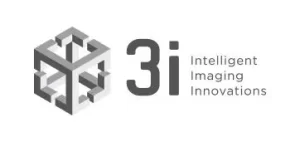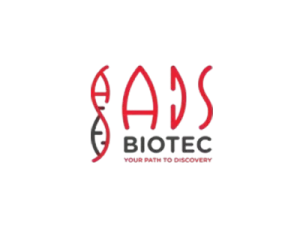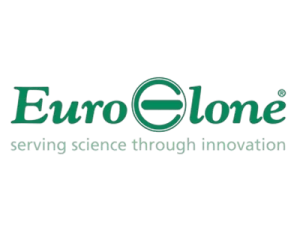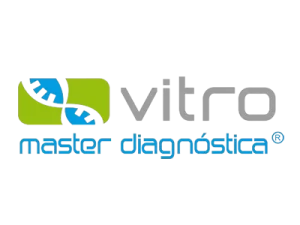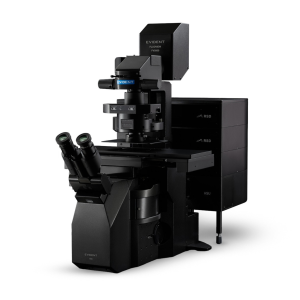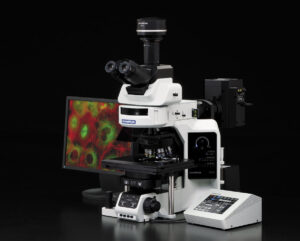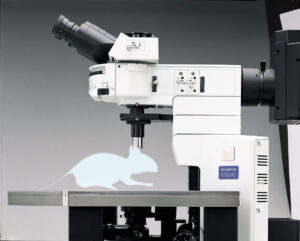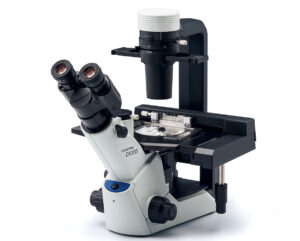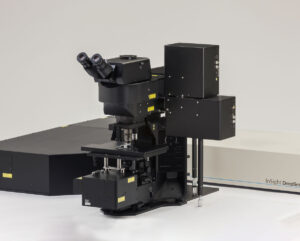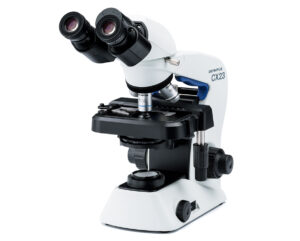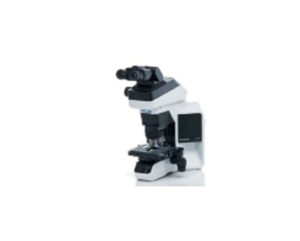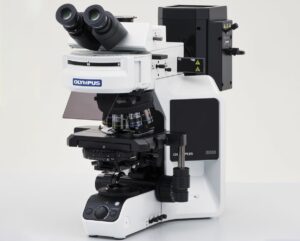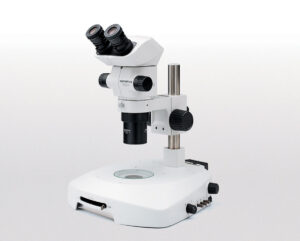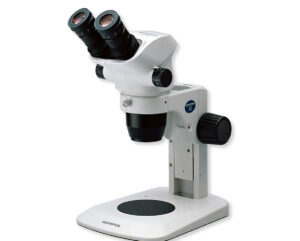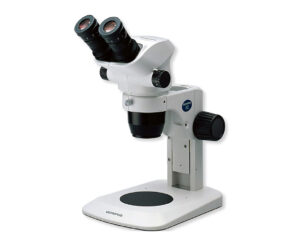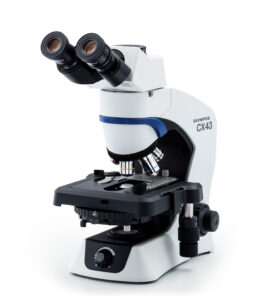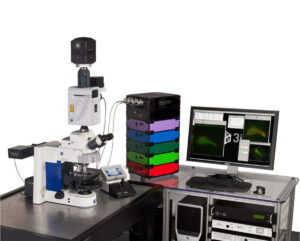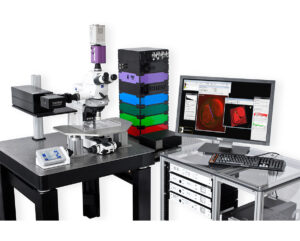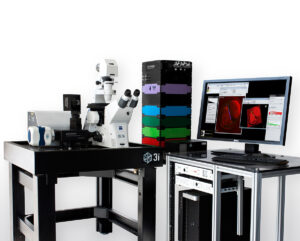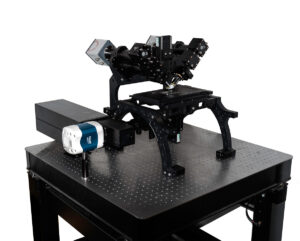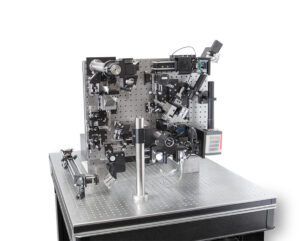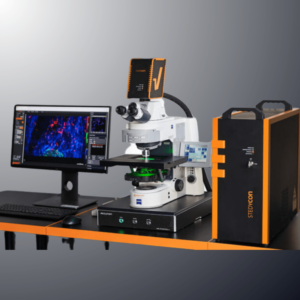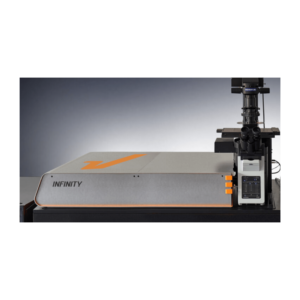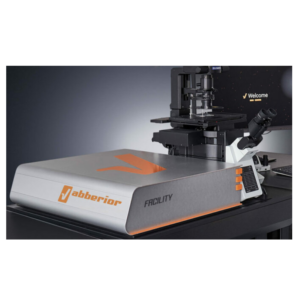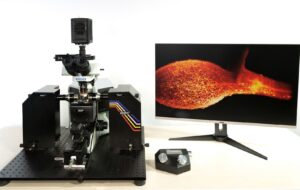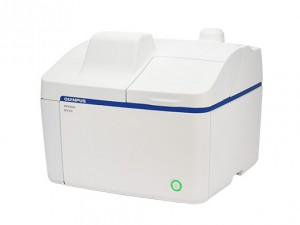DSS: Redefining Biotechnology & Life Science in India
FLUOVIEW™ FV5000
The FLUOVIEW™ FV5000 from Evident elevates scientific imaging with unmatched clarity, speed, and quantitative accuracy. Built on a century of optical excellence and advanced further by Evident innovation, the FV5000 delivers superior performance from surface-level structures to deep-tissue imaging in thick, living samples. Engineered for researchers who demand precision, flexibility, and reproducibility, this next-generation platform […]
BX51WI
The Olympus BX51WI is a high-performance upright microscope meticulously designed for advanced in vivo and in vitro electrophysiological research. Engineered to meet the exacting demands of patch-clamp experiments, it offers exceptional stability and accessibility, with a slim body and elevated frame that provide ample space for micromanipulators. Its modular design and compatibility with long working […]
CX33
Designed to streamline everyday laboratory routines, the Olympus CX33 delivers clear, bright images with minimal effort. It features a comfortable ergonomic build that allows users to operate the microscope without changing their natural hand positions, reducing strain during long hours of observation. Its LED light source provides reliable, color-accurate illumination with minimal maintenance, and the […]
BX53
The BX53 is a versatile system microscope that can be configured to meet virtually any research need. It supports a wide range of fluorescence imaging applications, and has a range of advanced features for enhanced operating ease and process flexibility.
SZ51
The versatile and cost-efficient SZ51 zoom stereo microscope offers a broad range of functions for observation and documentation of specimen in life science. New ComfortView eyepieces ensure fast, comfortable observation. The world’s first universal LED integrated illumination stand brings all the advantages of LED technology to stereo microscopy.
SZ61TR
Based on the SZ51, but with superior optical performance, the SZ61TR Stereo Zoom Microscope is ideal for routine and advanced stereo microscopic observation in life science, especially for those applications that require image documentation. Various illumination solutions maximise visibility in different tasks.
Olympus BX63 Microscope
The BX63 offers outstanding stability and imaging precision for research applications, with the convenience of a touch screen interface for easy operation. Additionally, it features a detachable controller that can be positioned to suit the operator's preference or workflow requirements.
BX51WI
The BX51WI is a special-purpose research microscope designed for electrophysiology. The BX51WI provides the stability crucial for patch clamping and is equipped with dedicated water immersion objectives designed for near IR illumination at 775 and 990nm.
Olympus MVX10 Microscope
The MVX10 MacroView is a research Macro Zoom Fluorescence Microscope. The MVX10 addresses the tradeoffs between stereo and compound imaging systems, offering high numerical apertures from a compound microscope along with long working distances and larger fields of view from a stereo microscope.
Olympus SZX16 Microscope
The new SZX16 is designed for advanced research and has a maximum numerical aperture of 0.30, producing a resolution of 900 line pairs per millimeter.
Olympus SZX10 Microscope
The Olympus SZX10 is designed for routine research. It offers a maximum numerical aperture (NA) of 0.2, producing a resolution of 600 line pairs per millimetre.
Olympus IX73 Inverted Microscope
The IX73 inverted microscope system sets new standards in advanced live cell imaging with its stable compact frame, outstanding optical performance and maximum flexibility.
Olympus IX83 Microscope
The fully motorised and automated IX83 is the most advanced member of the IX3 series of imaging systems for life science researchers and offers a new level of usability and application flexibility.
Olympus CKX53 Microscope
The Olympus CKX53 microscope delivers excellent performance, with improved image quality and ergonomics, as well as a comfortable workflow for a variety of cell culture needs such as live cell observation, cell sampling and handling, fluorescence observation, and image capture.
FVMPE-RS
With the Olympus FVMPE-RS, countless possibilities for deep tissue observation are finally realized. The system delivers unmatched high-speed imaging, essential for capturing the dynamic in vivo response, with fine laser control pinpointing the precise site for optimum excitation efficiency - even deep within the sample.
Olympus CX23 Microscope
The CX23 microscope unique features accommodates the student and every requirement in the educational setting. This cost-effective system provides easy and safe operation throughout the workflow and ensures outstanding optical performance with large field number (FN) 20
BX46
The Olympus new BX46 defines a revolutionary new standard in laboratory and clinical micrscopy.
BX43
The BX43 supports brightfield, phase contrast, simple polarized light, and darkfield observation. Its Ergonomic design can provide enhanced operator comfort during long hours of use.
Olympus SZX7 Microscope
In operation and optical performance,the SZx7 is designed for ease of use and working comfort in every task,from routine preparations to advanced research.
Olympus SZ61TR Zoom Stereo Microscope
The SZ61TR zoom stereo microscope is ideal for routine and advanced stereo microscopic observation in life science, especially for those applications that require image documentation.
Olympus SZ51 Stereo Microscope
The versatile and cost-efficient SZ51 zoom stereo microscope offers a broad range of functions for observation and documentation of specimen in life science.
Olympus CX43 Microscope
The CX43 microscope enable users to remain comfortable during long periods of routine microscopy observations.
3i Everest
Everest is an upright digital microscopy workstation for all widefield fluorescence applications as well as transmitted illumination applications.
3i VIVO
VIVO incorporates advanced optics, cameras, computers and proprietary electronics to achieve unparalleled speed, precision and flexibility in live tissue image acquisition.
3i Marianas
Marianas incorporates advanced optics, cameras, computers and proprietary electronics to achieve unparalleled speed, precision and flexibility in live cell image acquisition.
3i diSPIM
Dual-view Inverted Selective Plane Illumination (diSPIM) is a light sheet method offering low phototoxicity in 3D imaging making it possible to image living small organisms over extended periods of time.
3i Lattice LightSheet
Lattice LightSheet uses ultra-thin sheets of light to image 3D cellular dynamics for hundreds of volumes at dozens of frames per second at diffraction-limited resolution and super-resolution.
STEDYCON
The STEDYCON transforms your existing widefield microscope into an advanced confocal and STED nanoscope, achieving a remarkable resolution down to 30 nanometers. With just a free camera port and a quality objective lens, you can enhance your imaging capabilities significantly.
INFINITY
The INFINITY platform stands as the ultimate customisable solution for all microscopy applications. INFINITY is designed to meet every research challenge from STED and confocal microscopy to intravital imaging, material science, and optical trapping. Simply share your requirements, and we'll deliver a tailored, continuously upgradeable system precisely configured to support your research objectives.
FACILITY
FACILITY offers a revolutionary combination of advanced microscopy technology and user-friendly design, setting new standards for high-performance imaging. This system integrates state-of-the-art features ideal for both confocal and super-resolution imaging, all with intuitive, effortless operation.
Alpha3 Light Sheet Microscope
The Alpha3, a product developed by PhaseView, has been designed to provide researchers with a versatile and high-performance light sheet microscopy solution. As an advanced fluorescence microscope, the Alpha3 incorporates intelligent optical focus sweeping capabilities to ensure uniform and artifact-free imaging across the entirety of the field of view.
APX100
Made with well-known Olympus optics, an reflexive user interface, a powerful AI, and a suite of smart features, the APX100 system combines ease of use with high-quality image data to fit your research needs.
Testimonials & Reviews

